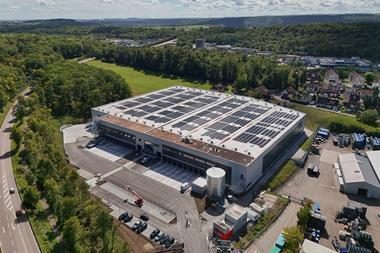The biggest issue caused by placing too much weight on NAV lies in the fact that it is calculated on a backward basis, looking at historic asset valuations, writes Barney Coleman
Following a recent panel discussion at the EPRA Bloomberg annual finance summit, the spotlight once again fell on the best and most accurate valuation methodology for European Listed Real Estate (LRE), especially in the fast-changing macro-economic environment.
Net Asset Value (NAV) no doubt remains a central valuation metric and indeed the EPRA NAV is over 20 years old. But whilst it is functional at its heart, it has often been promoted as the primary way – sometimes the only way – to value a LRE company or the sector-at-large. This is highly limiting in showcasing value.

The biggest issue caused by placing too much weight on NAV lies in the fact that it is calculated on a backward basis, looking at historic asset valuations. With LRE based on a daily mark-to-market share price it is clear that the NAV valuation can quickly become outdated.
Alongside me on the panel were Mike Burt, CFO of Unite Integrated Solutions and Elizabeth Blaise, deputy CEO of Mercialys. They agreed that in investor meetings the emphasis is increasingly less on NAV valuation and more on earnings. Indeed, the NAV discussion is very cultural with UK investors more interested in a NAV, whereas their continental counterparts are more focused on earnings.
Blaise commented: “I think it’s been several years since I’ve been asked during roadshows, the details of our NAV calculations, whereas it was very fashionable about ten years ago, maybe because the cycle now is different.”
Indeed, the focus on more operational style metrics such as earnings reflects the trend in LRE over the past decade to see the companies as operating platforms generating cashflows.
As Burt put it: “We’re an operational business, so I think there is definitely a view that they want to talk about earnings. It’s interesting on a two or three week road show, we probably spend the first day talking about NAV and fielding questions on NAV, then we spend the next three weeks talking about earnings and cash flow.”
Nevertheless, all agree that NAVs are an important metric, because understanding the underlying value of the assets that support the business is crucial. Therefore, it is more of matter of emphasis recognising that NAV is important but there are other metrics too.
Perhaps even more important than that, a real estate business should be seeking to communicate its future business value, rather than solely the value it has previously created. If the last few years have shown us anything, it’s that the future cannot be predicted purely by looking at what’s happened in the past.
Earnings are a familiar measure for investors, particularly those with a more generalist background, and familiarity is something they understandably like. It helps when they’re building global portfolios across several markets and helps to create a sense of transparency and comparability – something all-important particularly during times of economic turbulence.
For the sector to grow and match its global peers, more generalist investor capital is needed, and it is essential as an industry that we talk their language.
The point is that a broad range of metrics exist to value a LRE business, and each investor can choose between a NAV or an earnings-based valuation. Neither is intrinsically right or wrong and each can be useful depending on the investors’ need and the economic backdrop.
This is why over the last 20 years EPRA has developed a set of financial metrics that cover the whole spectrum. We are currently updating our earnings metric to be more reflective of the company’s underlying operating results and an indication of the extent to which current dividend payments are supported by earnings. The update is planned to be published in late 2024.
It would feel radical – and ultimately wrong and counterproductive – for the European LRE sector to fully disregard NAVs altogether when valuing. But taking a holistic view which includes more emphasis on earnings and dividends, as other jurisdictions do, could be a more accurate approach, allowing investors to represent the strength of LRE more accurately, and ultimately drive better outcomes for the sector. And the entire set of EPRA financial metrics helps in achieving it.
In doing so, we believe investors would unlock a massive amount of capital flow into the market. That opportunity must be seized sooner rather than later.
To read the latest IPE Real Assets magazine click here.


















